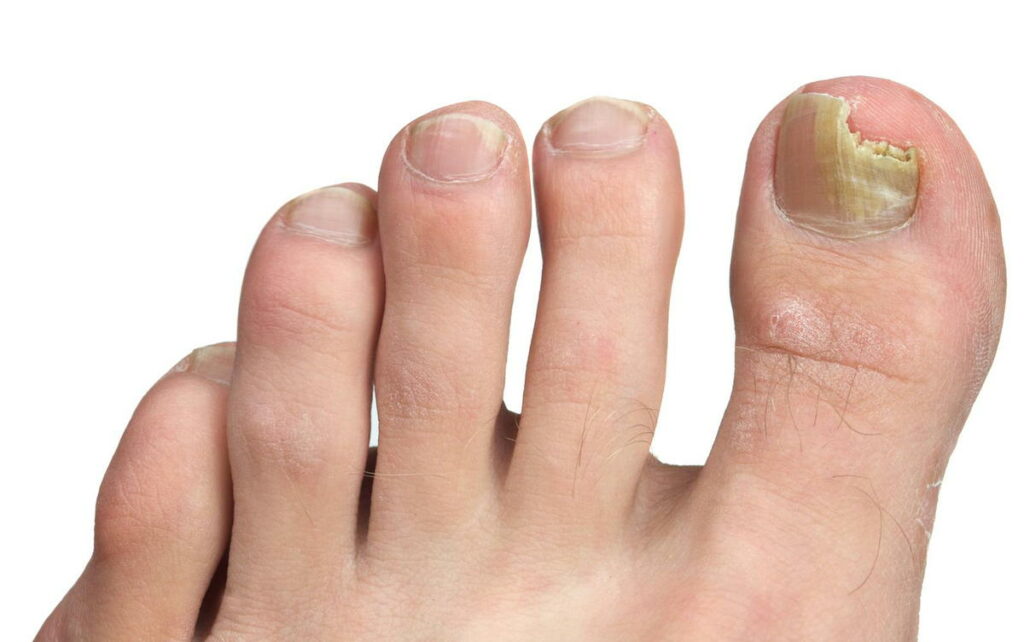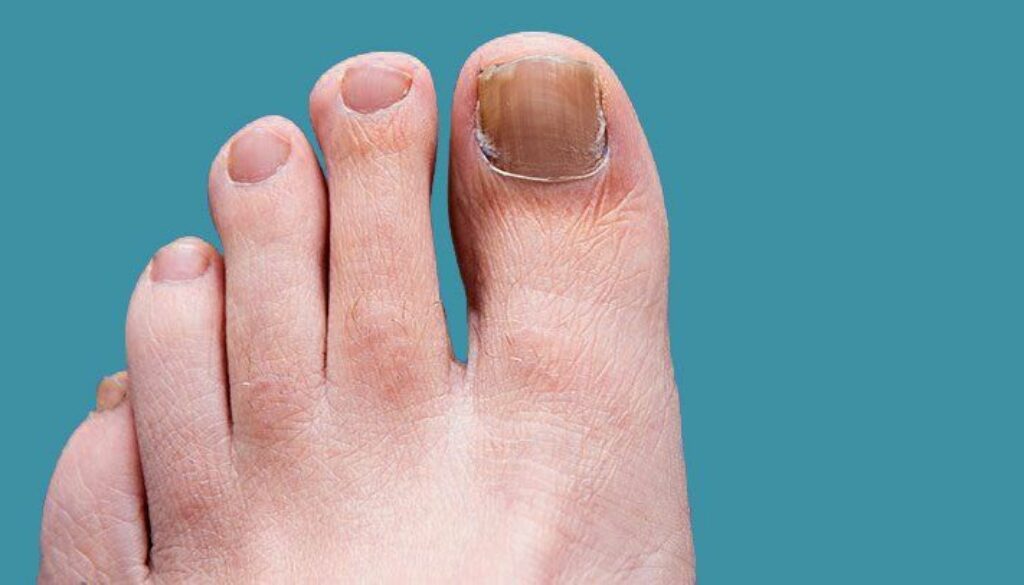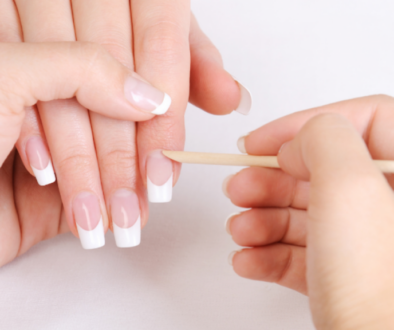How to Prevent and Treat Nail Fungus
Are you looking for ways to prevent and treat nail fungus effectively? In this article, we will guide you on how to prevent and treat nail fungus. Nail fungus is a common condition that affects millions of people worldwide. It can be caused by various factors, including poor hygiene, prolonged exposure to moist environments, and weakened immune systems. Preventing and treating nail fungus is crucial to prevent the infection from spreading and causing further complications.
Nail fungus, also known as onychomycosis, is a fungal infection that affects the nails of the fingers and toes. It is caused by various types of fungi, including dermatophytes, yeasts, and molds. Nail fungus can cause the nails to become thick, discolored, brittle, and distorted. It can also be accompanied by pain, discomfort, and a foul odor.
Preventing and treating nail fungus is essential to maintain healthy nails and avoid the spread of infection. Early intervention is key to successful treatment. With proper education and awareness, individuals can take proactive measures to prevent nail fungus and seek the appropriate remedies if the infection occurs.
Understanding Nail Fungus
Before delving into prevention and treatment strategies, it is crucial to understand what nail fungus is and how it manifests. Nail fungus usually starts as a white or yellow spot under the tip of the nail. As the infection progresses, it can cause the nail to become thick, brittle, and discolored. In severe cases, the nail may detach from the nail bed.
Common Signs and Symptoms of Nail Fungus Include:
- Thickened or distorted nails
- Yellow, white, or brown discoloration of the nails
- Brittle or crumbly nails
- Pain, discomfort, or tenderness around the nails
- A foul odor emanating from the affected nails
Certain factors increase the risk of developing nail fungus. These include:
- Advancing age
- Weakened immune system
- Poor hygiene practices
- Genetic predisposition
- Prolonged exposure to moist environments, such as swimming pools or sweaty shoes
Understanding the nature of nail fungus and its implications is important to tackle the infection effectively. With this knowledge, individuals can adopt preventive measures and seek appropriate treatments in a timely manner.

Prevention Measures
Preventing nail fungus is always better than treating it. By following simple preventive measures, individuals can significantly reduce their risk of developing nail fungus. Here are some effective prevention strategies:
Importance of good hygiene practices:
- Regularly wash your hands and feet with soap and water.
- Dry your feet thoroughly, paying special attention to the areas between the toes.
- Use a clean towel to gently dry your nails and avoid sharing towels or nail clippers with others.
- Avoid picking or biting your nails, as this can introduce bacteria and fungi into the nail bed.
Proper nail care techniques:
- Keep your nails short, clean, and well-trimmed.
- Avoid using sharp or dirty tools for nail grooming.
- Do not remove the cuticles, as they act as a protective barrier against infections.
- Refrain from wearing artificial nails, as they can trap moisture and create an ideal environment for fungal growth.
Using clean tools and avoiding sharing personal items:
- Regularly disinfect your nail clippers, files, and other nail tools.
- If you visit a nail salon, ensure that the tools are properly sterilized.
- Avoid sharing nail clippers, files, socks, or shoes with others to minimize the risk of fungal transmission.
Wearing breathable footwear and socks:
- Opt for shoes made of breathable materials, such as leather or mesh.
- Avoid wearing tight or narrow shoes that can create a warm and moist environment for fungi to thrive.
- Choose moisture-wicking socks that help keep your feet dry.
Avoiding prolonged exposure to moist environments:
- If your feet tend to sweat excessively, use antifungal powders or sprays to keep them dry.
- Change your socks and shoes regularly if they become wet or damp.
- When using public showers or swimming pools, wear waterproof sandals to minimize direct contact with contaminated surfaces.
By practicing these prevention measures consistently, you can significantly reduce your risk of developing nail fungus. However, if the infection does occur, various treatment options are available to effectively manage and eliminate it.
Natural Remedies for Nail Fungus
Natural remedies can be effective in treating mild to moderate cases of nail fungus. These remedies often contain antifungal properties that can combat the infection. While natural remedies may take longer to show results compared to prescription medications, they are generally safe and can be used as complementary treatments. Here are some natural remedies for nail fungus:
- Tea tree oil:
Tea tree oil is derived from the leaves of the Melaleuca alternifolia tree and possesses powerful antifungal properties. It can effectively fight against various types of fungi that cause nail infections. Apply a few drops of tea tree oil directly to the affected nails using a clean cotton swab or ball. Repeat this process twice daily for several weeks to see improvements.
- Vinegar:
Vinegar, especially apple cider vinegar, has antifungal properties that can inhibit the growth of fungi. Create a foot soak by mixing equal parts of vinegar and warm water in a basin. Soak your feet in the solution for 15 to 20 minutes daily. Pat your feet dry thoroughly after the soak.
- Garlic:
Garlic contains powerful antifungal compounds like allicin, which can help combat nail fungus. Crush a few garlic cloves and apply the paste directly to the affected nails. Cover the area with a bandage and leave it on for a few hours or overnight.
- Coconut oil:
Coconut oil has natural antifungal properties and helps moisturize and soothe the skin. Apply a small amount of coconut oil to the affected nails and surrounding areas. Massage it gently and leave it on for a few hours or overnight. Repeat this process daily until the infection improves.
- Essential oils:
Certain essential oils like lavender oil, oregano oil, and thyme oil have antifungal properties that can help treat nail fungus. Dilute a few drops of the essential oil of your choice with a carrier oil, such as olive or jojoba oil. Apply the mixture to the affected nails and massage it in gently. Leave it on for a few hours before washing it off.
These natural remedies can be used in combination with other preventive measures and treatment options to effectively manage and treat mild cases of nail fungus. However, if the infection persists or becomes severe, it may be necessary to consider over-the-counter treatments or consult a healthcare professional for further evaluation.
Over-the-Counter Treatments
Over-the-counter (OTC) treatments for nail fungus are readily available at pharmacies and drugstores. These treatments usually contain antifungal agents that can effectively combat the infection. OTC treatments are generally considered a first-line approach for mild to moderate nail fungus. Here are some common OTC treatments:
- Antifungal creams, ointments, and solutions:
These topical treatments usually contain active ingredients like clotrimazole, terbinafine, or miconazole. Apply the cream, ointment, or solution to the affected nails according to the instructions on the package. Consistency is key, so follow the recommended treatment duration.
- Topical antifungal nail polishes:
Nail polishes containing antifungal agents like ciclopirox can be applied directly to the affected nails. The polish forms a protective film that gradually releases the antifungal agents over time. Apply the polish to the affected nails once or twice a week as directed.
Nail lacquers containing antifungal medications like amorolfine or efinaconazole are painted directly onto the affected nails. The lacquer forms a protective barrier and gradually releases the antifungal medication. Apply the lacquer once or twice weekly as directed.
- Oral antifungal medications:
In some cases, oral antifungal medications may be necessary for more severe or persistent nail fungus infections. These medications are usually prescribed by healthcare professionals and may have potential side effects. Oral antifungal medications include terbinafine, itraconazole, and fluconazole.
When using OTC treatments, it is important to read and follow the instructions carefully. Results may vary depending on the severity of the infection and individual response. If OTC treatments do not yield satisfactory results or the infection worsens, it may be necessary to seek professional medical help for further evaluation and treatment.
Medical Procedures for Severe Cases
In severe cases of nail fungus, where the infection does not respond to OTC treatments or natural remedies, medical procedures may be considered. These procedures are usually performed by dermatologists or podiatrists and are aimed at removing or destroying the affected nail tissue to facilitate the regrowth of healthy nails. Here are some medical procedures for severe cases of nail fungus:
- Debridement and trimming of affected nails:
In this procedure, the dermatologist or podiatrist will carefully trim and remove the portions of the infected nail. This can help reduce the fungal load and facilitate the effectiveness of topical or oral antifungal treatments.
- Laser therapy for fungal nail infections:
Laser therapy is a relatively new treatment option for nail fungus and involves using specific wavelengths of light to target and destroy the fungi infecting the nails. The treatment is non-invasive and usually requires multiple sessions for optimal results.
- Surgical removal of severely infected nails:
In rare cases, surgical removal of severely infected nails may be necessary. This procedure is typically reserved for cases where the nail is causing significant pain or discomfort and when other treatment options have failed. The nail is removed under local anesthesia, and the wound is allowed to heal over time.

It is important to note that medical procedures are generally reserved for severe or persistent cases of nail fungus. They may not be necessary for most individuals with mild to moderate infections. If you suspect a severe case, it is advisable to consult a dermatologist or podiatrist for a proper diagnosis and personalized treatment plan.
Lifestyle Changes to Support Treatment
In addition to preventive measures and treatment options, certain lifestyle changes can support the effective prevention and treatment of nail fungus. These changes aim to create an environment that is less favorable for fungal growth and promote overall nail health. Here are some lifestyle changes to consider:
- Maintaining a healthy diet and lifestyle:
Consuming a nutrient-rich diet that supports overall immune health can help prevent nail fungus and support treatment. Ensure your diet includes plenty of fruits, vegetables, whole grains, lean proteins, and healthy fats. Stay hydrated and maintain a regular exercise routine.
- Strengthening the immune system:
A healthy immune system can help fight off fungal infections. Incorporate habits that boost your immune system, such as getting enough sleep, managing stress levels, and practicing good hygiene.
- Avoiding habits that can worsen fungal infections:
Certain habits can exacerbate nail fungus infections. Avoid wearing dirty or wet socks for extended periods. Do not use nail polish or artificial nails while treating an infection, as they can trap moisture and hinder the healing process.
- Ensuring proper foot hygiene and care:
Proper foot hygiene is essential for preventing and treating nail fungus. Keep your feet clean and dry, especially between the toes. Use talcum powder or antifungal powder to absorb excess moisture. If you sweat excessively, change your socks regularly or consider using moisture-wicking socks.
By incorporating these lifestyle changes into your daily routine, you can create an environment that is less conducive to fungal growth, support the effectiveness of treatment options, and improve overall nail health.
Tips for Avoiding Nail Fungus Reinfection
Once you have successfully treated a nail fungus infection, it is important to take steps to avoid reinfection. Nail fungus can be stubborn, and reoccurrence is common. Here are some tips to help you avoid reinfection:
- Disinfecting shoes and socks regularly:
Fungi can survive in shoes and socks, so it is important to disinfect them regularly. Spray the insides of your shoes with antifungal sprays or powders and wash your socks in hot water, preferably with an antifungal detergent.
- Ensuring proper foot drying after showers or exercise:
Moisture is a breeding ground for fungi. After showering or exercising, make sure to dry your feet thoroughly, especially between the toes. Use a clean towel and avoid rubbing vigorously to prevent irritation.
- Avoiding walking barefoot in public places:
Public places such as swimming pools, locker rooms, and communal showers can harbor fungi that cause nail infections. Always wear waterproof sandals or shoes to protect your feet from direct contact with contaminated surfaces.
- Regularly replacing old shoes and socks:
Over time, shoes and socks can become worn out and can harbor fungi. Replace your old shoes and socks regularly to minimize the risk of reinfection.
By following these tips, you can minimize the risk of nail fungus reinfection and maintain healthy nails in the long term.
Recognizing When to Seek Medical Help
While preventive measures and various treatment options can help manage and treat nail fungus, there may be instances where professional medical help is necessary. It is important to recognize when to seek medical help to ensure appropriate treatment and avoid complications. Here are some signs that indicate the need for medical intervention:
- Persistent or worsening symptoms:
If your nail fungus symptoms persist or worsen despite using preventive measures or over-the-counter treatments, it is advisable to seek medical help for further evaluation.
- Spread of infection to other areas:
Nail fungus can spread to adjacent nails or other areas of the body. If you notice the infection spreading or developing in new areas, consult a healthcare professional for prompt intervention.
- Underlying health conditions that may complicate treatment:
Certain medical conditions like diabetes, circulation problems, or compromised immune systems can increase the risk of nail fungus complications. If you have any underlying health conditions, it is important to consult a healthcare professional for appropriate treatment recommendations.

When seeking medical help for nail fungus, a dermatologist or podiatrist is typically the appropriate healthcare professional to consult. They can assess the severity of the infection, provide an accurate diagnosis, and recommend suitable treatment options based on your individual circumstances.
Conclusion
Nail fungus is a common condition that affects many people, causing thick, discolored, and distorted nails. Preventing and treating nail fungus is essential to avoid complications and maintain healthy nails. By practicing good hygiene, following preventive measures, and adopting appropriate treatment options, individuals can effectively manage and eliminate nail fungus.
In this article, we discussed various strategies for preventing and treating nail fungus. We explored natural remedies, over-the-counter treatments, medical procedures for severe cases, as well as lifestyle changes that support treatment. It is important to note that results may vary depending on the severity of the infection, individual response, and adherence to recommended practices.
Remember, prevention is always better than cure. By incorporating good hygiene practices, proper nail care techniques, and lifestyle changes, you can significantly reduce your risk of developing nail fungus. If you do encounter a nail fungus infection, promptly seek appropriate treatment and consult a healthcare professional if necessary.
Also Read:



